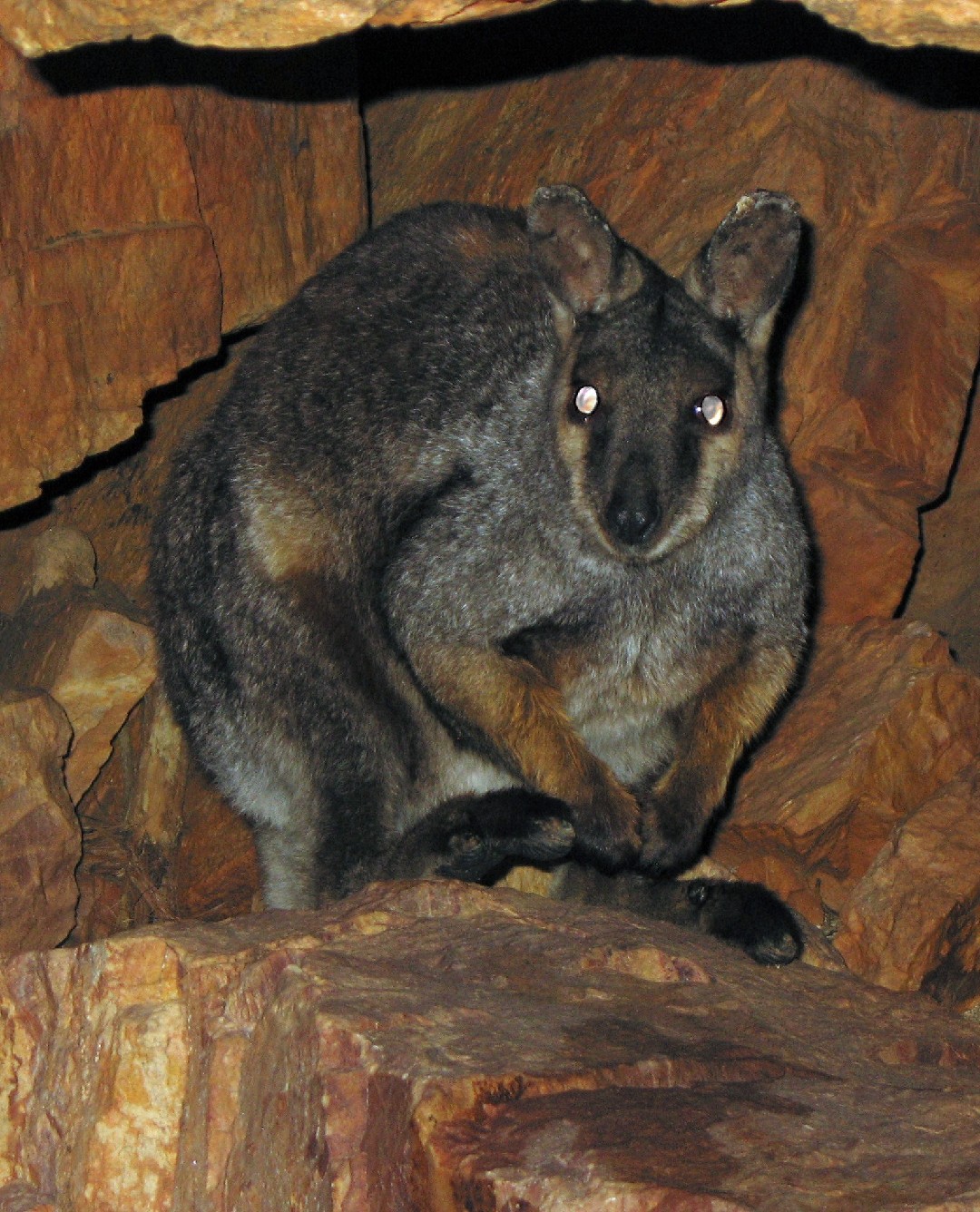Black-flanked rock-wallaby
A species of Rock-wallabies, Also known as Warru Scientific name : Petrogale lateralis Genus : Rock-wallabies
Black-flanked rock-wallaby, A species of Rock-wallabies
Also known as:
Warru
Scientific name: Petrogale lateralis
Genus: Rock-wallabies
Content
Description General Info
 Photo By GregTheBusker , used under CC-BY-2.0 /Cropped and compressed from original
Photo By GregTheBusker , used under CC-BY-2.0 /Cropped and compressed from original Description
The black-flanked rock-wallaby is a rather wary animal, with black and grey colouration to blend in with its rocky surroundings, later to lighten in colour during summer. It has short, thick, woolly fur that is particularly dense around the base of the tail, rump and flanks. Its long, brushy tail is quite useful for retaining balance as they hop from one rock to another, and the soles of its feet are highly textured to prevent slipping. This small nocturnal wallaby is found amid rocky outcrops. It is generally greyish-brown with a paler belly and chest, a dark stripe running from its head down its spine, and it has a dark tail and feet. This wallaby lives in groups of 10–100 individuals. It usually feeds at night in open areas such as grasses, where it can also find fruit, leaves and a variety of herbs. Because most of its water comes from its diet, it rarely drinks and can conserve water by taking refuge from the heat in rocky caves. It is most active when it leaves its shelter at early-evening. Individuals reach sexual maturity at 1–2 years of age, after which time breeding is continuous, depending on rainfall. Females show embryonic diapause; the development of the embryo can cease temporarily until environmental conditions become more suitable for its development to complete. The gestation period lasts around 30 days, and like other young marsupials, the young are poorly developed and suckle inside the mother's pouch until they are ready to leave. Unlike other kangaroos and wallabies, mothers leave their young in a sheltered place while they feed. Predation by introduced foxes and feral cats, habitat damage caused by sheep, goats and rabbits and alteration of fire regimes have caused the population to decline. Several sites where populations occur are protected, and a recovery plan is underway. Fox control has been established at several sites. 
General Info
Lifespan
10-15 years
Diet
Black-flanked rock-wallaby predominantly feeds on vegetation available within its rocky outcrop habitats. Crucially, its diet consists of grasses, herbs, and leaves, supplemented occasionally with fruits and seeds.
Appearance
Black-flanked rock-wallaby is a small, compact marsupial with a rough coat, predominantly grey with a distinctive dark stripe running from the middle of its back to the base of its tail. It exhibits a slender build with powerful hind limbs for jumping and climbing. The underparts are lighter, typically white or pale grey, and the tail is bushy and tipped in black. There are no significant differences in appearance between sexes or depending on age.
Behavior
Black-flanked rock-wallaby exhibits primarily nocturnal behavior, skilfully navigating rocky terrain with agile leaps. Their social dynamics are characterized by small family groups usually consisting of one dominant male, multiple females, and their offspring. Notably, black-flanked rock-wallaby display significant territorial behavior, particularly males, who vigorously defend their home range.
Population
Decreasing
Scientific Classification
Phylum
Chordates Class
Mammals Order
Diprotodontians Family
Macropods Genus
Rock-wallabies Species
Black-flanked rock-wallaby